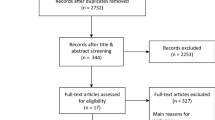Abstract
Purpose
The aim of our study was to identify factors which influence survival in patients with disseminated seminoma in the good prognostic group according to IGCCCG, as well as to evaluate the impact of treatment intensification in patients with negative prognostic factors.
Methods
We analyzed the database of the patients with metastatic seminoma who had received treatment at our department from 1986 to 2005. Inclusion criteria were as follows: morphologically verified seminoma; favorable prognosis according to IGCCCG; modern chemotherapy regimen (EP ± bleomycin); AFP level <15 IU/ml; and HCG level <300 mIU/ml. The primary endpoint was overall survival (OS).
Results
With median follow-up 83 months, 5-year OS rate was 91 % in 206 patients. Only three negative prognostic factors were associated with OS: retroperitoneal lymph nodes >5 cm (p < 0.01), pulmonary metastases (p < 0.01) and LDH level ≥2.25×ULN (p = 0.01). In view of the obtained data, we have changed our treatment approach since 2005. In case of any negative prognostic factors, we administered an intensified CT regimen—4BEP or 3BEP + 1EP. Prospective phase of the study included 34 patients with unfavorable prognosis. We observed an increase of 5-year OS rate in the intensified CT group in comparison with the standard CT group in patients with unfavorable prognostic from 85 to 100 %.
Conclusion
Administration of 4 cycles of induction CT (4BEP or 3BEP + 1EP) in patients with metastatic seminoma who have LDH level ≥2.25 ULN, and/or retroperitoneal lymph nodes >5 cm and/or pulmonary metastases results in decreased disease progression rate and significant gain in OS.




Similar content being viewed by others
References
Beyer J, Albers P, Altena R et al (2012) Maintaining success, reducing treatment burden, focusing on survivorship: highlights from the third European consensus conference on diagnosis and treatment of germ-cell cancer. Ann Oncol 00:1–11. doi:10.1093/annonc/mds579
Fizzazi K, Devta R, Caty A et al (2014) A risk-adapted study of cisplatin and etoposide, with or without ifosfamide, in patients with metastatic seminoma: results of the GETUG S99 multicenter prospective study. Eur Urol 65(2):381–386
Fossa SD, Oliver RT, Stenning SP et al (1997) Prognostic factors for patients with advanced seminoma treated with platinum-based chemotherapy. Eur J Cancer 33(9):1380–1387
Gholam D, Fizzazi K, Terrier-Lacombe MJ et al (2003) Advanced seminoma—treatment results and prognostic factors for survival after first-line, cisplatin-based chemotherapy and for patients with recurrent disease. Cancer 98(4):745–752
International Germ Cell Cancer Collaborative Group (1997) International Germ Cell Consensus Classification: a prognostic factor-based staging system for metastatic germ cell cancers. J Clin Oncol 15:594–603
Krege S, Beyer J, Souchon R et al (2008) European consensus conference on diagnosis and treatment of germ cell cancer: a report of second meeting of the European Germ Cell Cancer Concensus Group (EGCCCG): part II. Eur Urol 53:497–513
Mencel PJ, Motzer RJ, Mazumdar M et al (1994) Advanced seminoma: treatment results, survival, and prognostic factors in 142 patients. J Clin Oncol 12(1):120–126
Powles T, Bascoul-Mollevi C, Kramar A et al (2013) Prognostic impact of LDH levels in patients with relapsed/refractory seminoma. J Cancer Res Clin Oncol 139(8):1311–1316
Ruther U, Rothe B, Grunert K et al (1994) Role of human chorionic gonadotropin in patients with pure seminoma. Eur Urol 26(2):129–133
Weissbach L, Bussar-Maatz R, Löhrs U et al (1999) Prognostic factors in seminomas with special respect to HCG: results of a prospective multicenter study. Seminoma Study Group. Eur Urol 36(6):601–608
Conflict of interest
The authors declare that they have no conflict of interest.
Author information
Authors and Affiliations
Corresponding author
Rights and permissions
About this article
Cite this article
Fedyanin, M., Tryakin, A., Bulanov, A. et al. Chemotherapy intensification in patients with advanced seminoma and adverse prognostic factors. J Cancer Res Clin Oncol 141, 1259–1264 (2015). https://doi.org/10.1007/s00432-015-1914-5
Received:
Accepted:
Published:
Issue Date:
DOI: https://doi.org/10.1007/s00432-015-1914-5




